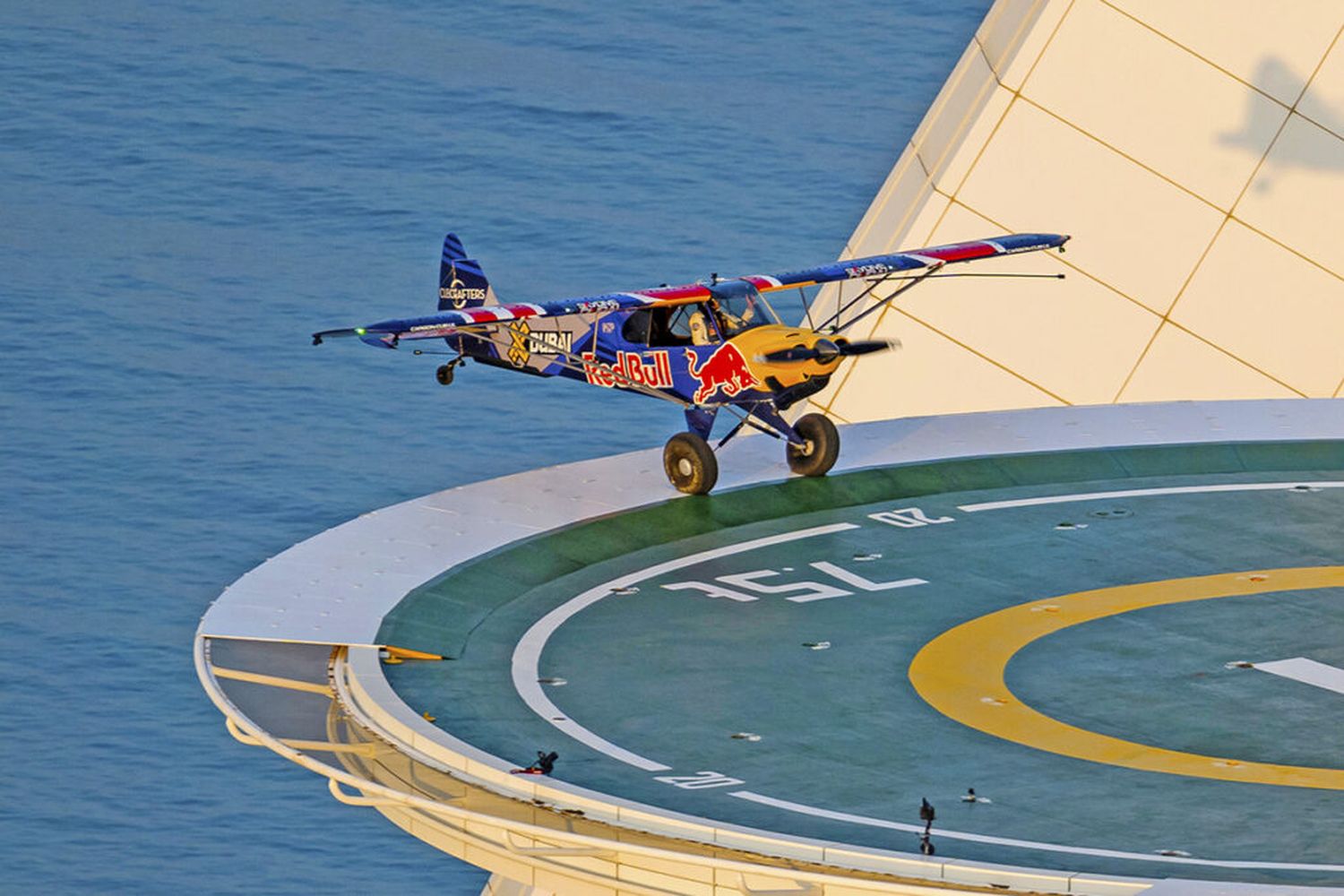Pilot achieves historic first-ever aircraft landing on helipad
Red Bull has once again challenged the limits of aviation by landing a plane on the helipad of the world’s most luxurious hotel, the Burj Al Arab in Dubai.
The feat was accomplished on Tuesday, 14 March, by pilot Luke Czepiela, who used a single-engine piston-powered Carbo Cub aircraft from CubCrafters, the same company that makes new versions of the classic Piper Cub, one of the world’s most popular training aircraft, reports our media partner Aeroin.
Polish pilot Czepiela has spent his life challenging the limits of aviation and at 6.58am this morning he added another achievement to his career by becoming the first person in history to land a plane on the helipad atop Dubai’s iconic Burj Al Arab Jumeirah, considered the world’s most expensive hotel, with daily rates starting at USD 1,700 (video can be seen at the bottom of the story).

The 39-year-old champion air racing pilot had just 27 metres to stop his CubCrafters STOL (Short Take-Off and Landing) plane, but managed the feat in just 20.76 metres.
«To be honest, I couldn’t be happier! Two years of preparation, third (landing) attempt today and everything went perfectly. We managed to put a plane on a helipad 212 metres above the ground in the most iconic and beautiful building in the world. The best thing after the landing was the take-off, I had a great time, swooping the plane out of the sky and diving almost level with the beach,» said the pilot.
Although the plane is made specifically for special short-space landings, landing it on an elevated platform on top of a 56-storey building with no visual cues for guidance makes Czepiela’s landing historic. The pilot revealed that «the biggest challenge was the lack of any external landmarks, which you normally find at an airport, where you have hundreds of metres of runway».
The pilot had been preparing for this moment since 2021, with 650 test landings at ground level – in Poland, the US and Dubai – giving him the confidence to land on the raised platform on Tuesday.
He explained: «Normally, when I approach a runway, I see the height above it and can easily control the approach path. Today, the helipad disappeared under the nose of the plane and my field of vision was reduced. I had to rely on my practice and instincts when my last landmarks disappeared if I wanted to stop before I ran out of room.»
US manufacturer CubCrafters made several modifications to the aircraft, reducing its weight to 425 kilograms, moving the main fuel tank to the rear of the plane to allow for more aggressive braking and adding nitrogen to increase power for Czepiela’s second challenge: taking off from the apron.


Comentarios
Para comentar, debés estar registrado
Por favor, iniciá sesión